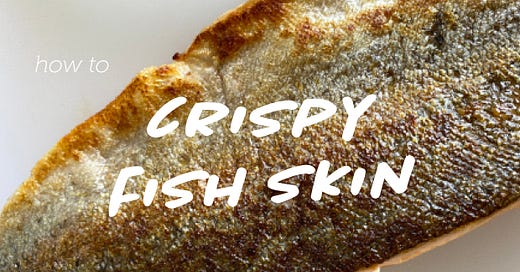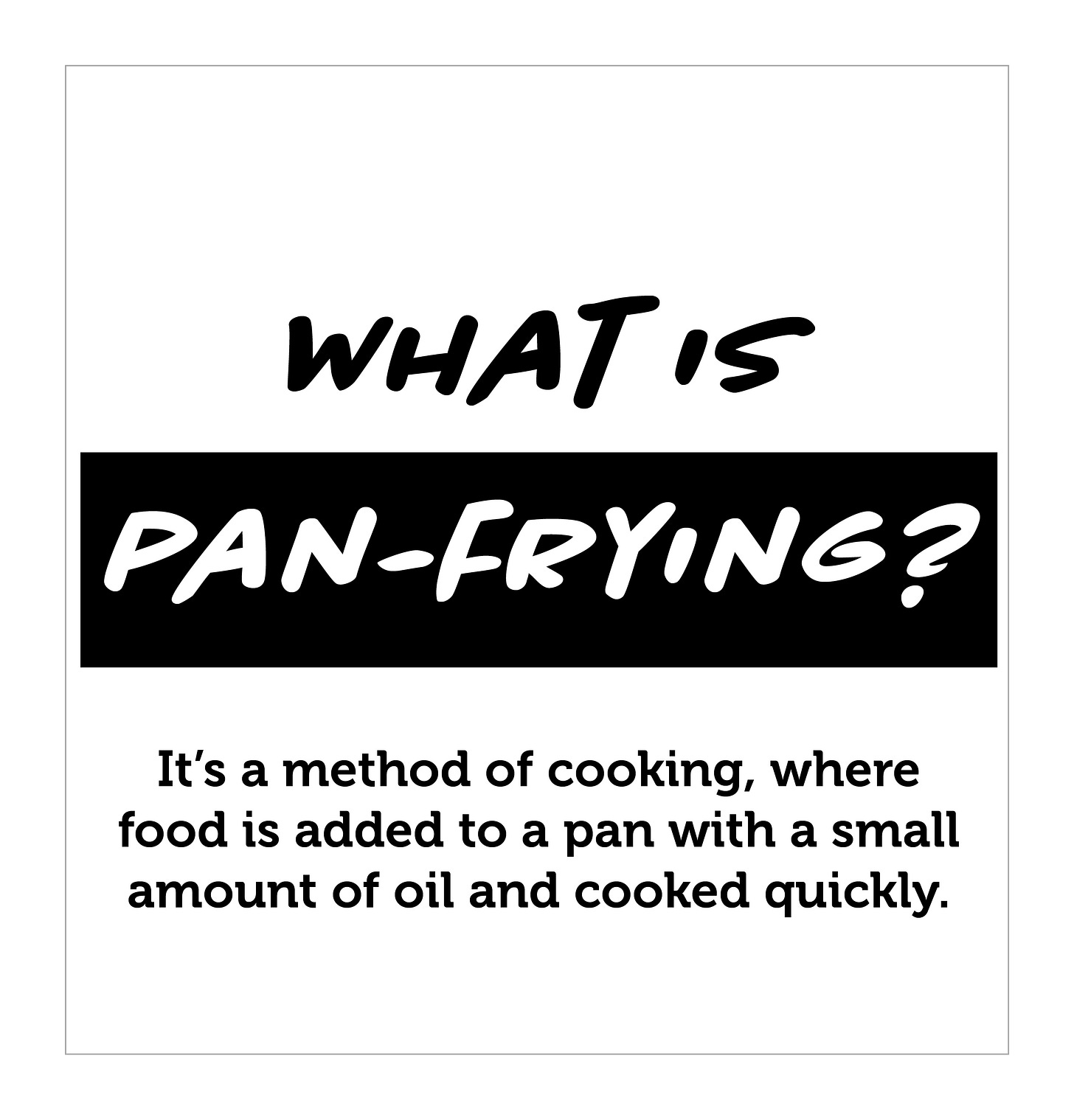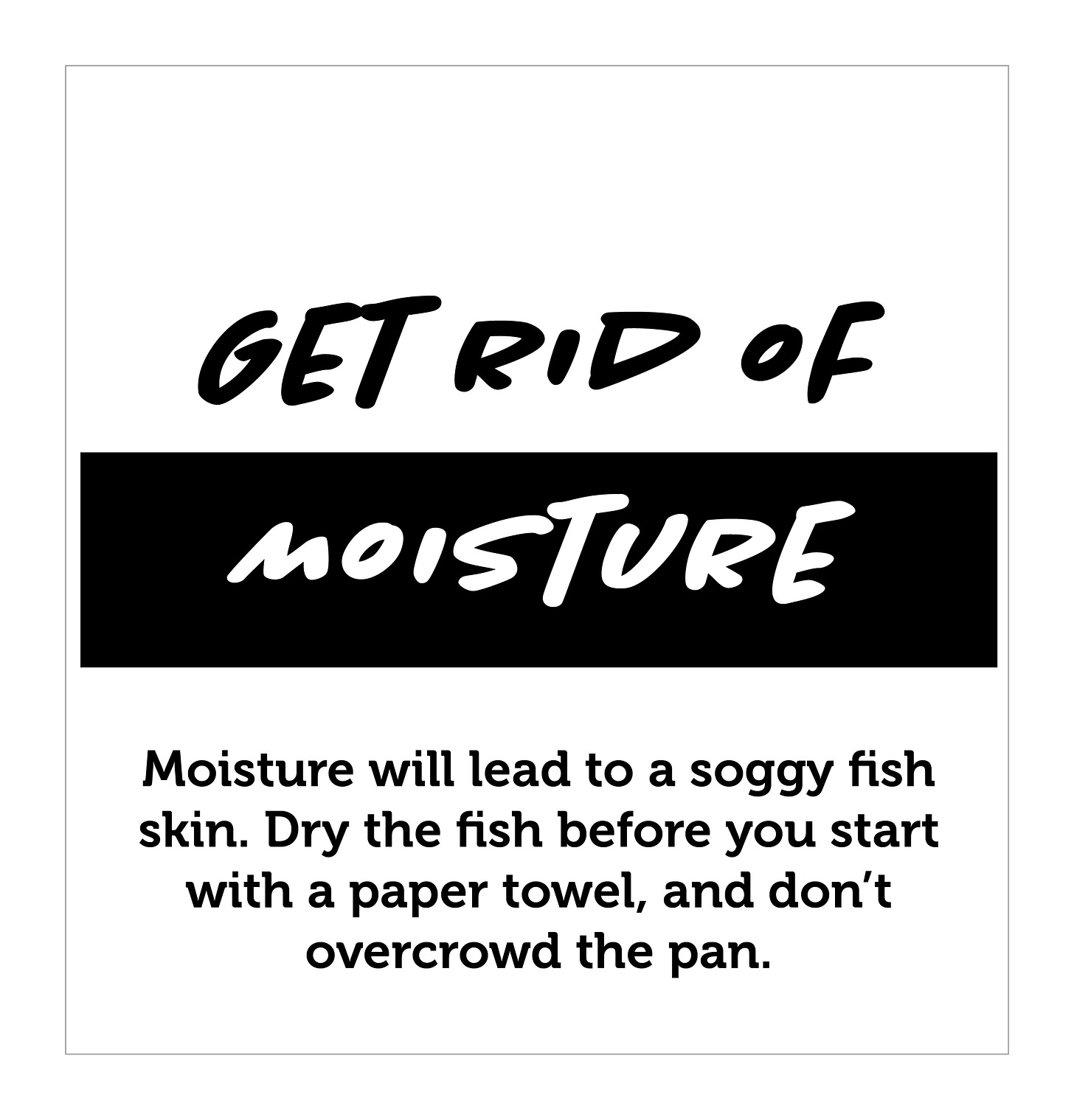You are reading Olympian Kitchen. For more like this subscribe here.
THIS ARTICLE IS as much about learning to fail as frying a piece of fish. Or rather learning not to fail. By allowing yourself to fail…
… stay with me! I’m going somewhere with this and we will get onto where it is I’m going, if you make it through the next few paragraphs and into the nitty gritty.
First, let’s talk fish skin. Making it crispy, golden and crunchy is a skill well worth having. It’s going to add texture (crunch), flavour (caramelised yum) and nutrition (omega-3 fatty acids, and vitamin E) to your dish.
And you know that sea bass you order in the restaurants? Yeah, that one that comes upside down, or the right way up if you’re a fish and sets you back a pretty penny? Well you can have that on your dinner table in ten minutes.
So let’s delve deeper. Understand what is happening. And how with a bit of experimenting you can get good results every time.
Video: How to pan-fry sea bass fillet
UNDERSTANDING THE WHYS
A little science goes a long way. What’s going on when we pan-fry a piece of fish?
What is pan-frying?
Pan-frying is a fast way to cook food. To pan-fry we add a thin layer of oil to a hot pan; the oil transfers the heat evenly and quickly into the food, at high temperature.
This method of cooking works especially well with fish. You can pan-fry whole fish, although don’t try a tuna, or choose fillets.
Best fish fillets to pan fry: sea-bass, bream, salmon, cod, tuna or hake
Best whole fish to pan fry: sea-bass, bream, small turbot.
How does the skin become crispy?
To become crispy, first the surface of the skin needs to dehydrate.
Sizzle! Listen for it, as you place the fish into a pan, it’s a good sign you’re on the way to crispy skin. That’s the sound of the water being driven off by the heat.
You need heat. To kickstart the Maillard reaction, you'll need a high temperature of around 140°C / 280°F, this is when proteins and sugars in the fish skin start to do their thing, caramelise and crisp up. Yum.
Why does the skin curl up?
As you put the fish into a hot pan, the fibres will tighten causing the fish will curl and its flesh to stick to the pan. To stop the curl, just be ready with a spatular to press down on the back of the fish. In about 30 seconds the fibres relax and you can too.
What can stop the skin becoming crispy?
Two things really.
Moisture
Not enough heat
You can do a few things to help matters. First, dry the fish skin (with a paper towel) before you start. Make sure the pan is hot enough to drive off the moisture on initial contact. Don't overcrowd the pan with too many fillets, as temperatures will drop.
And then the all important question, the answer we all want to know: How to know when it is done?
It’s easy to over do it. The proteins in the fish are much more delicate than the skin, and begin to coagulate around 50°C / 122°F. Cook for any length of time over this temperature and the fish will be dry, over-cooked.
But of course, you want to give it enough time and heat for that skin to crisp up.
There is a tightrope to walk here.
The tightrope you need to walk is between getting the skin to crisp up and keeping the fish flesh moist.
Which is why pan-frying fish is not quite as easy as it first appears.
And why - (you made it through to the nitty gritty!) - why this piece is as much about learning to fail as frying a piece of fish. It’s going to take a few goes to nail it.
Fail. Fail again. Fail better.
I like this quote. I heard it first from Margaret Atwood. She was talking about writing. But it appears everywhere, in life, in sport. It’s called losing there. You get used to it early.
Lose. Lose again. Lose better.
And I’ve seen it while working in restaurants, perfect dishes don’t just materialise on the first go, there’s a lot of experimenting that goes on behind the scenes. In one restaurant, I spent hours peeling almonds by hand, for a dish the head chef was trialling - it didn’t work, in fact it was inedible, and the almonds (and my time) ended up in the bin.
But it wasn’t wasted time.
Improvement goes hand in hand with mistakes.
Don’t worry if you mess up. If the skin burns, breaks or is soggy. You’re not serving the Queen of England (good job as she’s dead), this isn’t a competition at all, it’s just a week day supper, and there’ll be another one tomorrow. And anyway, even with the failures you can pull the skin off and happily eat the rest.
But, if you want to get better at something, at anything then you do need to do these two things: one identify WHAT went wrong, and two identify WHY it went wrong.
Below, I've put together a check list of typical ‘Fish Fails’ which should help you identify the what’s and why’s if things go awry.
There is also a third step on the staircase to improvement, which is obvious one, but one we all get caught up on, and that third step is: Don’t repeat the same mistake the next time.
So let’s get cooking. Are you ready to fry? Here’s how to get crispy skin in five steps.
Five Steps to Getting a Crispy Skin
Heat pan.
Add oil and get pan hot.
Fish in (skin side down, spatula on top of fish).
Cook for About 3-5 mins.
Flip Fish (and take immediately off heat).
Before you start
Prep. Before you start cooking, get your plates out, and add any sides. Ideally, you want to move from the burner, straight to the plate. Leave your fish in a hot pan, while you get everything ready, and it will overcook.
Step 1: Hot Pan
Get your non-stick pan hot before you add the oil.
Step 2: Add the right oil
Use sunflower oil, which has a higher smoke point. Use very little. You are looking to glaze the pan with a thin layer. If you’ve added too much, (careful it’s hot) wipe out the extra with a paper towel.
Get the pan hot, before you move onto step three. Very hot. Just before the wisps of smoke, hot. Shimmery, hot.
Step 3: Fish in skin side down
Place the fish in the pan skin side down, and immediately press a spatula down on top of the fish to stop the curling. If there is no sizzle, remove the fish (the pan isn’t hot enough) wait a minute or so and try again.
Step 4: Allow to cook for a few minutes
How many minutes? This part is down to you to have some fun with and experiment. I can tell you, for the fillets of sea bass I buy at the market it’s about 3 to 5 minutes. But those two minutes make all the difference. It depends on the fish, the thickness of the fillet, the size of the pan, and just how hot you got it. Be aware you might want to adjust the temperature as you cook, turning it down after a minute or so.
Step 5: Flip and off heat
A good tip is to flip the fish just before you think it’s done. You want to still see some translucent flesh. Not a pancake flip here. Using a spatular, gently turn the fish over. And immediately remove the pan from the heat. Avoid leaving the fish in the pan as the flesh side cooks very quickly. Literally, in the time you cross your kitchen and take it over to the plate, it is ready. Serve crispy side up.
Fish Fails
So, here’s a list of things that might not have worked and why. I hope it helps!
stuck to pan
pan was not hot enough, or you didn’t press the spatular down quickly enough.
falls apart in pan
you either tried to move the fish too early, give it time to release naturally - or you messed around with it too much flipping it back and forth.
soggy skin
probably down to too much moisture on the fish skin before you cooked it, or too low temperature in the pan.
burnt skin
too hot
overcooked dry fish
you’ve cooked the fish too long on the skin side down, or you’ve left it too long in the pan after the flip.
So, over to you!
Would absolutely love to hear from you, if you have a go at this, and let me what happens. Just leave a comment below.
👨🍳 THAT’S IT FOR NOW, BACK SOON WITH THE NEXT ONE, WHICH I’M DEBATING - IT MIGHT BE ABOUT COOKING WHOLE FISH IN SALT, OR HOW TO MAKE HEALTHY PANCAKES, ANY PREFERENCES?
👨🍳👨🍳 AND IN THE MEANTIME, I’M HOPING TO GET OUT ANOTHER EPISODE ON THE 100 DAY CHEF STAGE.
NIK X












One of the most comprehensive guides I've ever seen! Thanks for putting so much time and thought into it 👏🏻
Brilliant piece! So clear! But have you tried a prospector pan from the Netherton Foundry? The spun iron gets so hot, and it works as well as any non-stick pan!